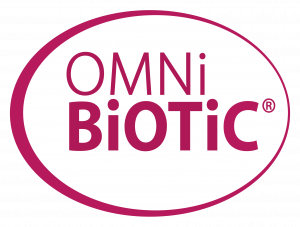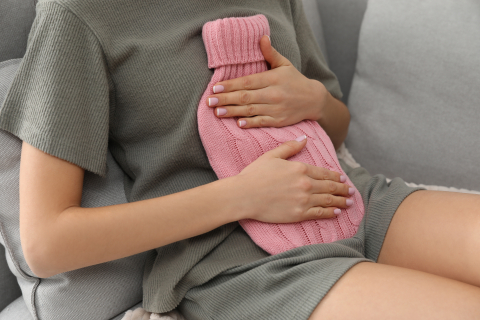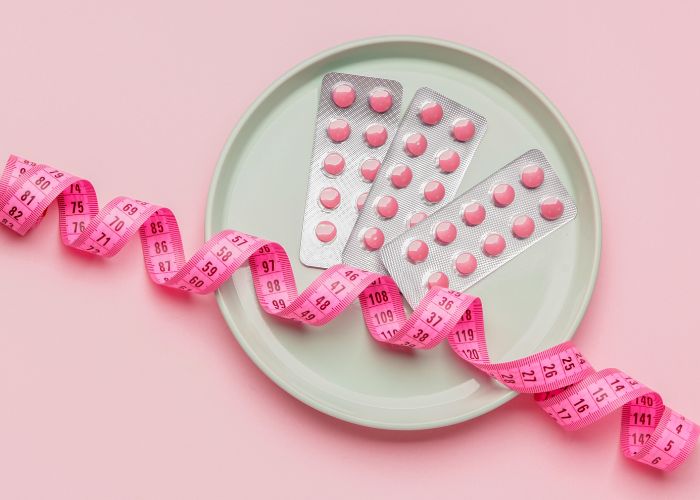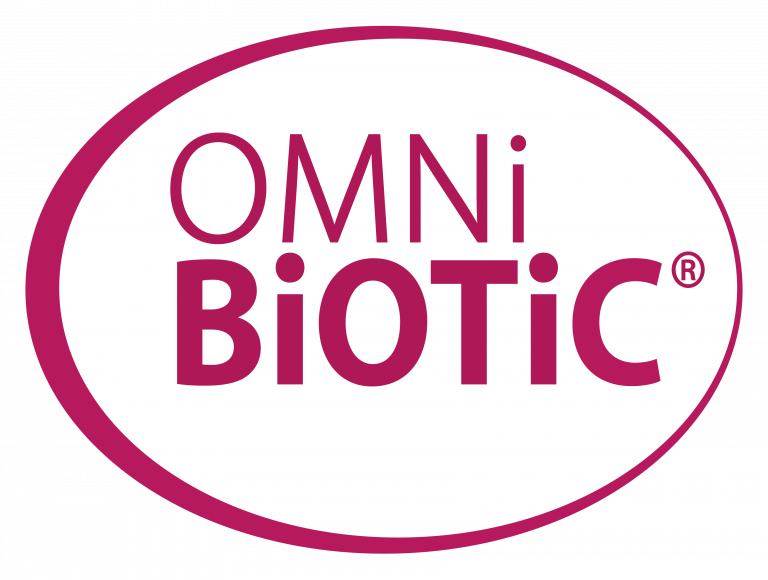Chronic Inflammatory Bowely Diseases
Abdominal pain, diarrhoea, vomiting, nausea, and fever – symptoms that also occur with an upset stomach or stomach flu are familiar to everyone. People with IBD (chronic inflammatory bowel disease) suffer from these symptoms to a greater extent, usually in episodes.
Contents
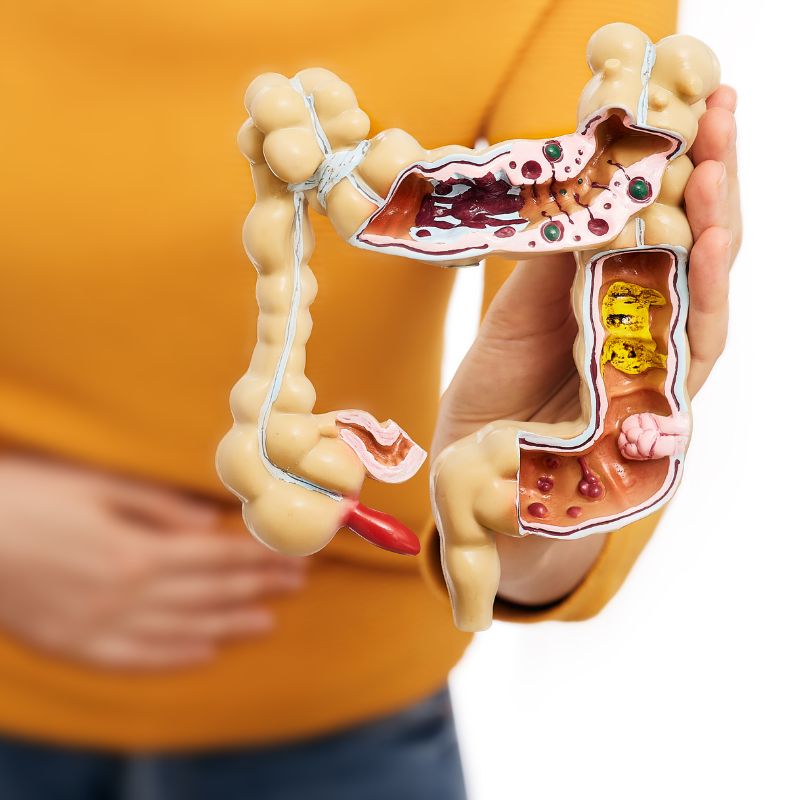
What are inflammatory bowel diseases (IBD)?
Crohn’s disease and ulcerative colitis are the two best-known and most common chronic inflammatory bowel diseases. They are episodic and cannot be cured, but they can be managed. In the acute phase, during the inflammatory flare-ups, the use of medication is usually necessary. Accompanying therapy with herbal and natural remedies has proven helpful for many patients, both in the acute phase and in the symptom-free phase.
The best basis for any treatment approach is a healthy or stable and protective intestinal flora to protect against intestinal infections (to which IBD patients are particularly susceptible) and also to minimise recurrences of the disease.
What are the symptoms of Crohn's disease and ulcerative colitis?
Typical symptoms are frequent, extreme diarrhoea, which in ulcerative colitis (CU) is mucous-bloody. Other symptoms are abdominal pain, nausea and vomiting. Bloating, fever and elevated inflammatory markers in the blood are also typical of chronic inflammatory bowel disease. Especially in Crohn’s disease (MC), patients lose weight due to loss of appetite and the lack of important nutrients. Many people with ulcerative colitis also suffer from anaemia, as the inflamed areas in the intestine cause blood loss.
Both diseases also cause problems outside the intestines. Patients often suffer from discomfort in the joints. The bile ducts, skin and eyes can also be affected. Long-term chronic inflammation of the bowel with frequent episodes of inflammation increases the risk of bowel cancer. That is why the goal is to minimise the inflammatory phases and symptoms.
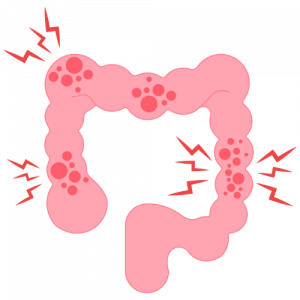
Morbus Crohn
(MC)
- Can affect the entire digestive tract, most commonly at the transition from small to large intestine.
- The rectum is affected in about 20 % of cases.
- The ileum is affected in 80 % of cases.
- Inflammation in all layers of the intestinal wall
- Stool: chronically thin, blood rarely and only in cases of large intestine involvement, up to 20 x stools/day.
- Abdominal pain: Mostly in the right lower abdomen
- Often symptoms at the anus (fistulas, abscesses, fissures)
- Anaemia (rare)
- Weight loss (common)
- Slightly increased risk of cancer
vs
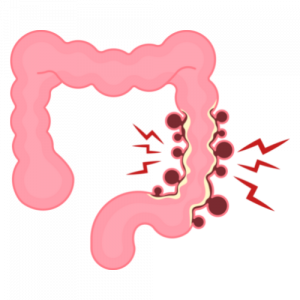
Colitis ulcerosa
(CU)
- Region affected: Large intestine
- The rectum is affected in 100 % of cases
- The ileum is rarely affected
- Inflammation only on the inside of the intestine or the intestinal mucosa
- Stool: Mucus and blood discharge, bloody-mucous diarrhoea > 10 times a day
- Abdominal pain: In the entire intestinal tract, especially the left lower abdomen
- Rare symptoms around the anus (fistulae, abscesses, fissures)
- Anaemia (common)
- Weight loss (rare)
- Increased risk of cancer
Modern stool diagnostics
As early as 300 BC, the Greek physician Hippocrates recognised: “The intestine is the route of all afflictions”. This early insight is confirmed by classical stool diagnostics and now also by the most modern molecular genetic methods. Numerous diseases originate in the intestine – or reveal themselves in changes in the intestinal flora
What are the underlying causes of IBD (Crohn's disease, ulcerative colitis)?
It is not yet clear how Crohn’s disease and ulcerative colitis develop and which triggers are responsible. A hereditary predisposition plays a role, albeit to a lesser extent in ulcerative colitis than in Crohn’s disease. In Crohn’s disease, more than 70 genes are known to be associated with the development of the disease. Environmental factors can also play a role. For example, the country in which you live, whether in a rural or urban area, is important for the probability of contracting the disease. The highest hygiene standards are more likely to trigger IBD.
IBD Triggers
Infections with certain harmful germs (measles virus, E.coli, mycobacteria, certain clostridia) seem to favour the development of IBD, along with certain psychological factors (stress, certain personality structures), genetic disposition (reaction of the immune system) and environmental factors.
These various factors (including psychological, genetic, infectious and environmental factors) lead to increased permeability of the mucosa (“leaky gut”) and increased immune activity in the intestinal mucosa.
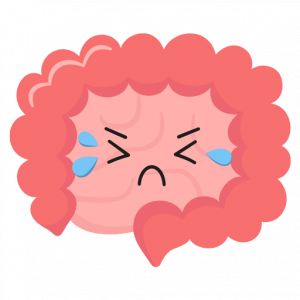
Increased intestinal permeability
„Leaky Gut“
In the intestinal mucosa, neighbouring cells are each connected to each other via a “tight junctions”. They seal the cells against each other so that no foreign substances or pathogens can pass between the cells.
As long as this “intestinal barrier” is intact, the entirety of the intestinal mucosal cells forms a veritable protective shield, preventing foreign substances (including bacteria or “toxins”) from entering the body from the intestinal tract. In IBD – not only due to inflammatory changes – this intestinal barrier is “leaky“, “holey”, the cells are no longer so firmly connected to each other, so that pathogens and toxins (“toxins”) can penetrate the intestinal mucosa more easily and lead to an immune reaction and to inflammation.
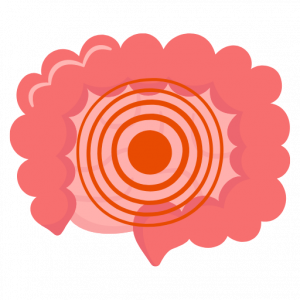
Increased immune activity
- in the intestinal mucosa
In tissue samples of the intestinal mucosa of affected people with IBD, an increased immune activity can be detected. The immune system’s defence cells and their messengers (inflammatory mediators such as interleukins, TNF (Tumour Necrosis Factor-α) are increasingly detected in the mucosa. This leads to autoimmune processes with destruction of the intestinal mucosa. Where this increased defence reaction, these self-destructive inflammations come from and what they possibly serve, is being intensively researched.
The intestinal microbiome plays an important role. The intestinal flora, which is pathologically altered and damaged in patients with IBD, the biodiversity of bacteria in the intestine that is important for normal intestinal function, is no longer present in sick people. The intestinal bacteria can no longer fulfil their protective and defensive function.

How is IBD diagnosed?
The diagnosis of inflammatory bowel disease is made on the basis of the typical pattern of symptoms, after colonoscopy and with the help of imaging procedures.
In each individual case, the doctor has to check whether it is really IBD or another disease. Many infectious diseases also manifest themselves with diarrhoea, and medication intolerance also results in similar complaints.
Especially in older people, it is important to check whether a lack of blood circulation is to blame for the symptoms. (Vascular occlusions (thromboses) in the blood vessel system of the intestine: ischaemic colitis (inflammation of the intestine caused by a lack of blood).
A doctor will discuss the following questions with you in order to help make the diagnosis:
- Where do you have pain and in which situations does it occur?
- Do you have diarrhoea, blood, mucus in your stool? How often do you have bowel movements?
- Have you noticed a connection between the pain and certain foods or drinks? Do you often have intestinal infections (“stomach flu”)?
- Do you have other symptoms such as vomiting, muscle and joint pain, heartburn and fever? Do you feel tired quickly? Have you lost weight? This is typical for ulcerative colitis (anaemia).
- Do you have any other health conditions? (For example, cholangitis, i.e. inflammation of the bile ducts; conjunctivitis, i.e. inflammation of the eyes; dermatitis, i.e. skin diseases)?
- Do you take medication regularly?
- Family history (presence of disease in the family; a genetic component is suspected in Crohn’s disease and to a lesser extent in ulcerative colitis).
Diagnosis of an IBD
After a detailed discussion of your medical history, a thorough physical examination may be performed. In order to differentiate between Crohn’s disease and ulcerative colitis and to exclude possible infectious intestinal diseases that show similar symptoms to IBD, the diagnosis of IBD always requires an examination of the entire digestive tract.
Endoscopic (colonoscopy – examination of the large intestine – and oesophago-gastro-duodenoscopy (OGD) – examination of the oesophagus, stomach and small intestine) and radiological examinations (X-ray, computed tomography, CT for short), MRI (magnetic resonance imaging) may all be used for diagnosis.
Clinical findings (laboratory and inflammation parameters (C-reactive protein, CRP for short, as well as calprotectin, etc.), liver and kidney function and histological examinations (fine-tissue examinations, e.g. of endoscopically obtained intestinal mucosa samples) also provide important findings.
Indications of liver, bile or pancreatic diseases must be followed up. Stool cultures and serological examinations are important to distinguish infectious diarrhoeal diseases. Only the overall consideration of the findings results in the “mosaic diagnosis” of a chronic inflammatory bowel disease: However, in some patients, a primary classification into Crohn’s disease or ulcerative colitis is not possible. Only the course of the disease over time enables a definitive classification.
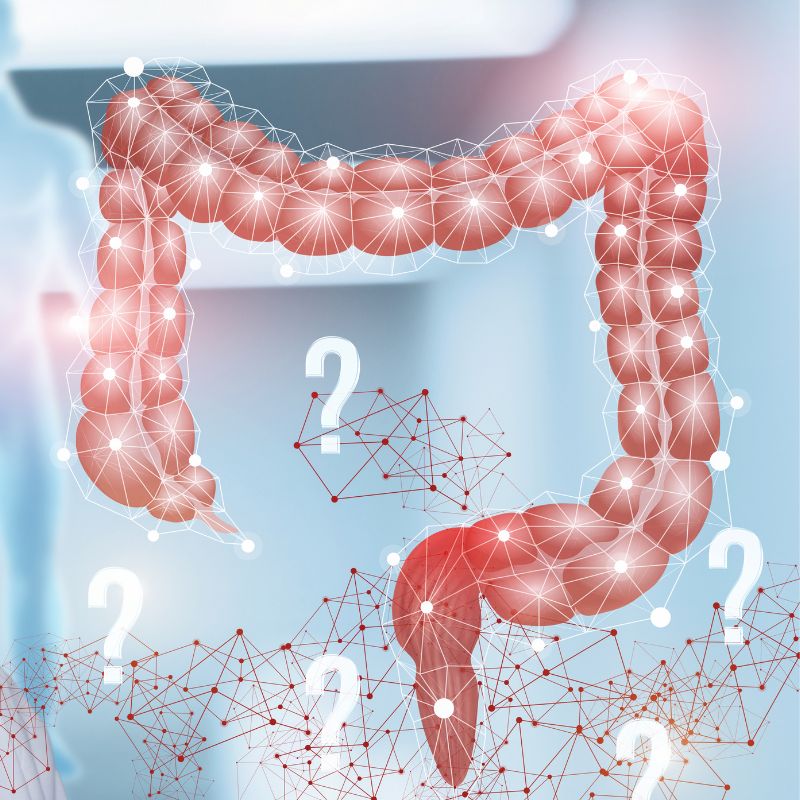
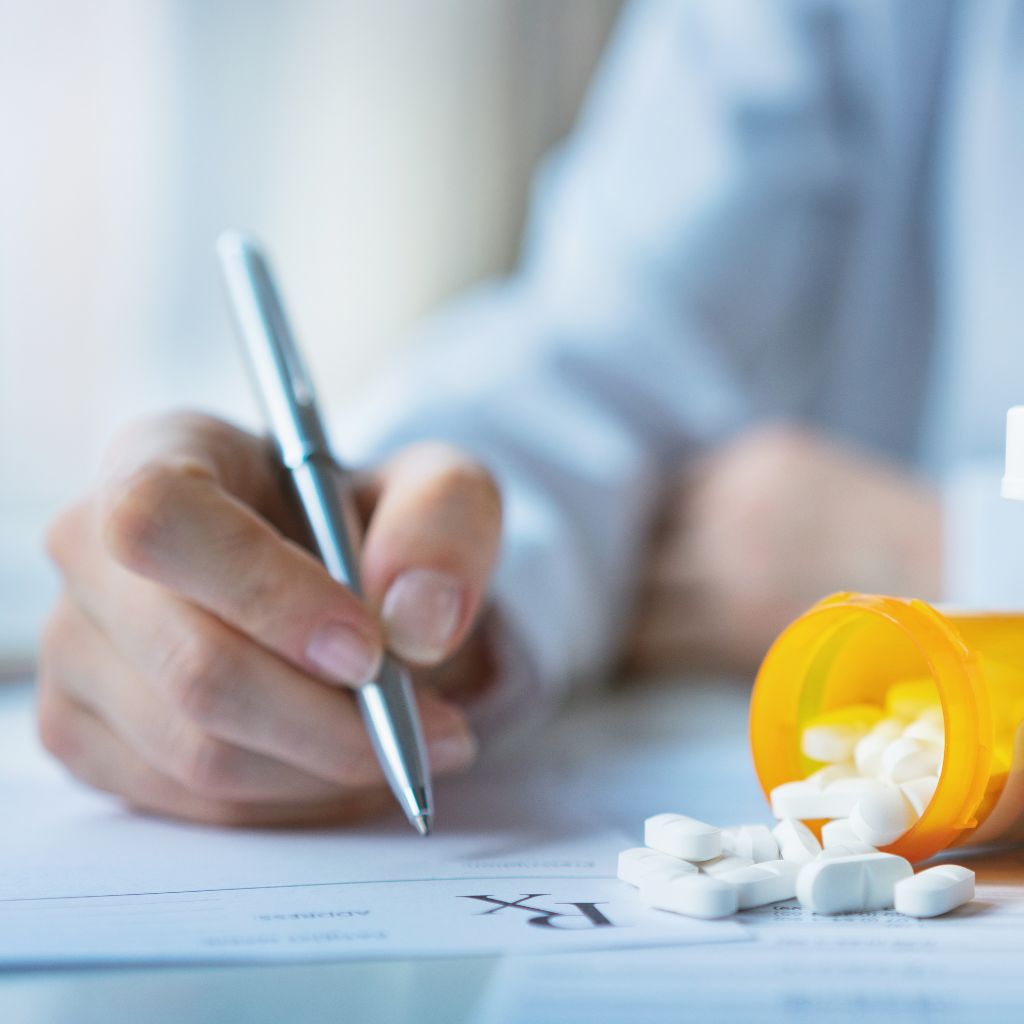
Managing IBD
At present, Crohn’s disease and ulcerative colitis are not yet curable. Therapeutic measures are primarily aimed at improving the quality of life of those affected, eliminating or alleviating symptoms, minimising inflammatory relapses and preventing complications.
It is particularly important for treatment to know the exact location of the inflammation in the stomach and intestinal tract. In addition to recommendations on how to manage an IBD in everyday life and with regard to diet, medication is a central component of the therapy. The focus is on treatment with anti-inflammatory drugs.
Ulcerative Colitis (Colitis ulcerosa)
The medication of choice for ulcerative colitis is commonly mesalazine (5-aminosalicylic acid). Since it is the large intestine, which is mainly affected in this disease, it is possible to administer this medication via the anus. There are suppositories, enemas and foams that can exert their effect directly at the site of inflammation, in addition to tablets and capsules that are swallowed.
In addition, glucocorticoids (cortisones), immunosuppressants and antibodies against inflammatory factors are used in ulcerative colitis. Furthermore, it has been established and proven in clinical studies that the bacterial flora in particular has a significant influence on the development and course of ulcerative colitis. In the symptom-free phases, certain probiotic bacterial strains have proven to be just as effective and anti-inflammatory as mesalazine. At the same time, the probiotic option is not associated with any side effects compared to standard medication. Bacterial preparations counteract the harmful causes of IBD and do not just combat the symptoms.
Crohn's Disease (Morbus Crohn)
In Crohn’s disease, too, glucocorticoids, immunosuppressants and antibodies can be administered. A distinction is made between preparations that improve the symptoms in the inflammation phase (in the active relapse) and those that are intended to reduce the probability of new relapses.
When is an operation necessary?
Despite the many medicinal options, it may still be necessary to perform surgery. Depending on the main focus of inflammation, different surgical procedures are used. Reasons for surgery are complications such as severe bleeding, intestinal perforation, inflammation that does not respond sufficiently to medication and the occurrence of colon cancer or precancerous lesions. The risk of colon cancer is increased in ulcerative colitis and in Crohn’s disease when the colon is affected. The extent of the inflammation plays an important role. Surgery becomes necessary in patients with Crohn’s disease when complications such as bleeding, fistulas, intestinal obstructions or abscesses occur.
What helps with IBD?
Herbal and alternative therapeutic approaches
Some data is available on preparations with frankincense, myrrh and camomile. They have an anti-inflammatory effect. A preparation with frankincense extract is said to have similar results in Crohn’s disease as mesalazine (which has only limited effect in Crohn’s disease). The typical complaints such as abdominal cramps, diarrhoea and joint complaints could be improved in two-thirds of the patients.
Comparable trials have been conducted in ulcerative colitis. Both frankincense and myrrh contain triterpenic acids, which are responsible for the anti-inflammatory effects of ulcerative colitis. Myrrh also has an antispasmodic effect, as it reduces the vehemence of intestinal contractions and relaxes the intestinal muscles. Especially the triple combination of frankincense, myrrh and coffee charcoal has proven to be effective. The symptom-free period could be maintained just as well (as was investigated in a small study) as with mesalazine.
US scientists have also looked at the anti-inflammatory effects of turmeric. In one study, children suffering from Crohn’s disease or ulcerative colitis were given turmeric extract in capsules. A dose of 4 g was well tolerated by most of the children, and the symptoms of IBD were improved.

Tips for managing IBD
Tip 1
The exact cause of IBD is not yet known. Nevertheless, an important factor for the outbreak of the relapses is the mental state. Stress can trigger a new relapse. It is therefore important to include sufficient rest phases and moments of relaxation in everyday life.
Tip 2
Eliminate flatulent, hard-to-digest foods from the menu! A food diary is helpful in determining which foods and drinks are well tolerated and which situations have a negative influence on the symptoms. Be careful with dietary fibres!
Tip 3
Accepting the disease is an important step. Self-help groups provide contact to other people affected.
Tip 4
A (also long-term) intake of probiotic multispecies synbiotics that protect the intestinal mucosa and balance the digestive function is ideal for prophylaxis and supportive treatment of irritable bowel syndrome.
Tip 5
Regular bowel cancer screening is a must with IBD!
Tip 6
Exercise has a demonstrably positive effect in the symptom-free period. Sport increases the general well-being, reduces inflammatory activity and you can get to know your body better. Light sports such as walking, swimming, gymnastics, yoga and Pilates are recommended.
Tip 7
If you are being treated with immunosuppressants during the acute phase of the disease, you should ensure that you have sufficient vaccination protection! Live vaccines should only be administered during the symptom-free period.
Tip 8
Alcohol damages the intestinal mucosa and should be avoided!
Tip 9
Smoking increases the rate of acute relapses in Crohn’s disease, i.e. MC patients should refrain from smoking. In contrast, the complaints of ulcerative colitis patients worsen after giving up smoking. Starting smoking now because of ulcerative colitis is not recommended because of the numerous negative effects and complications.
